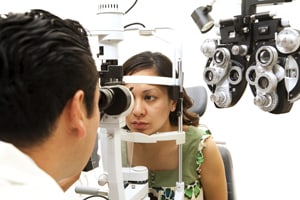
Shire has agreed a licencing deal with Parion Sciences for a dry eye disease drug that bolsters its ophthalmic portfolio, a priority area for the Irish group.
Shire is paying $20m upfront for rights to P-321 a sodium channel (ENaC) inhibitor that is currently heading into a phase II trial, with another near-term development milestone of $20m on the cards in the near future. All told the deal could be worth up to $535m for North Carolina biotech Parion, while Shire adds to the pipeline behind its recently-approved dry eye disease therapy Xiidra (lifitegrast).
Xiidra became the first and only product approved in the US to treat both the signs and symptoms of dry eye disease when it got the go-ahead from the FDA last year, challenging a market for drug treatments currently dominated by Allergan’s $1.4bn product Restasis (cyclosporine). Shire’s drug was launched in August and had turned over $54m by the end of the year, adding another $39m in the first quarter with Shire claiming its product is now capturing 22% market share in the US.
P-321 is a topical formulation that is thought to work by blocking the absorption of tears, helping to keep the surface of the eye hydrated. That is a different mechanism of action to current drugs including Xiidra, which work by reducing inflammation in the eye. In a statement the two companies said the hope was that the drug could “address tear volume deficiency and promote ocular surface healing”.
Parion has already completed a phase I/II trial in 53 patients with mild-to-moderate dry eye disease with preliminary signs that it could improve symptoms.
“Ophthalmics is a continued focus for Shire, and the programme for P-321 will benefit from our development and commercial infrastructure and expertise,” said Shire’s CEO Flemming Ornskov. “This is an opportunity to apply our knowledge and experience from ophthalmics and dry eye disease for further innovation in this space.”
Dry eye is widespread but hard to define – in part because it can be caused by a range of factors and patients report symptoms from mild, temporary irritation through to chronic illness that can dramatically affect quality of life and even threaten sight.
Eyecare market research firm Market Scope estimates that new drugs will help drive the dry eye market from $3.4bn last year to nearly $4.5bn in 2021, with drugs taking a share alongside over-the-counter eyedrops and surgical devices.
In 2015 Shire bolstered its eyecare pipeline with the acquisition of Foresight Biotherapeutics for $300m, adding a late-stage treatment for bacterial and viral conjunctivitis.




